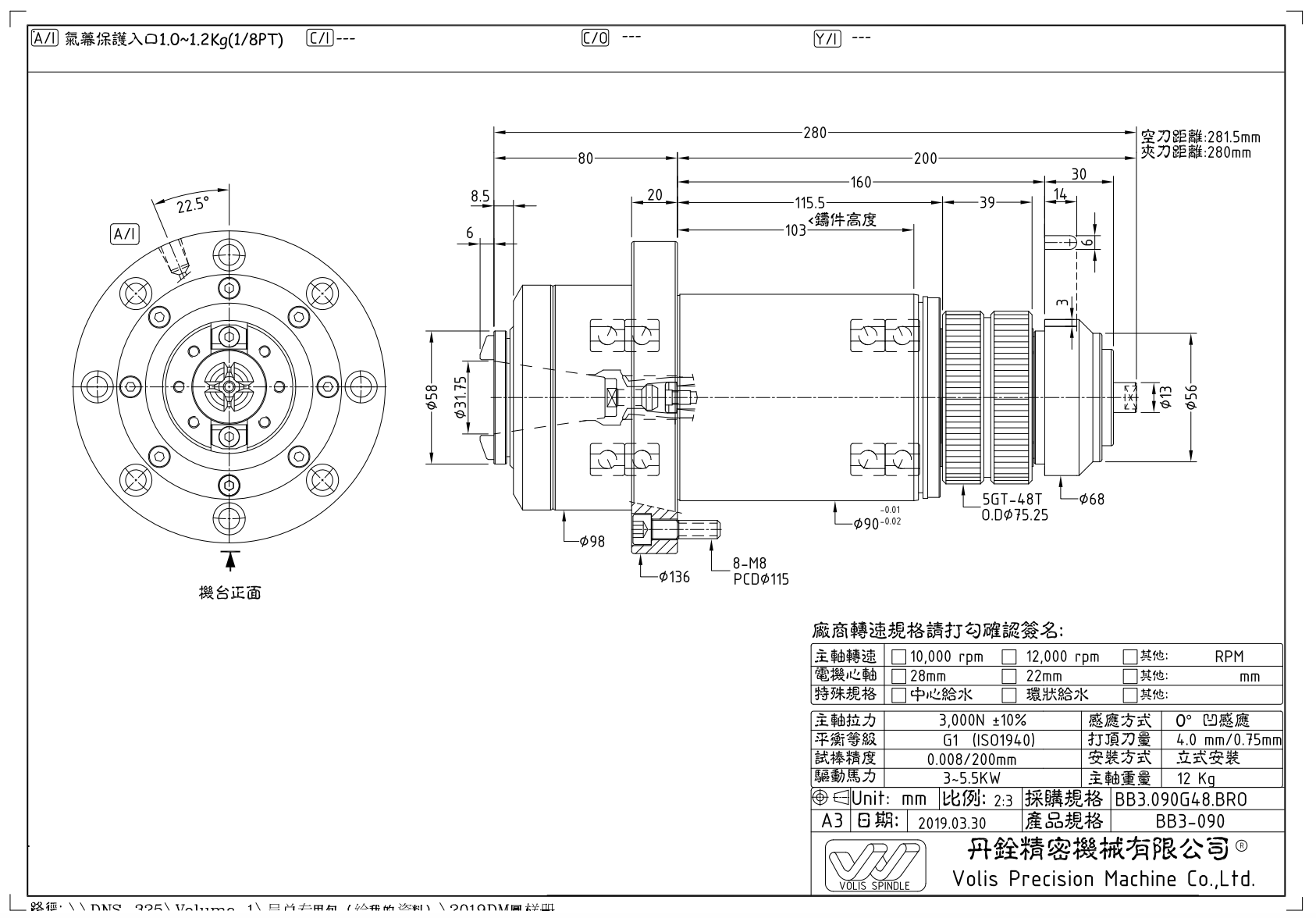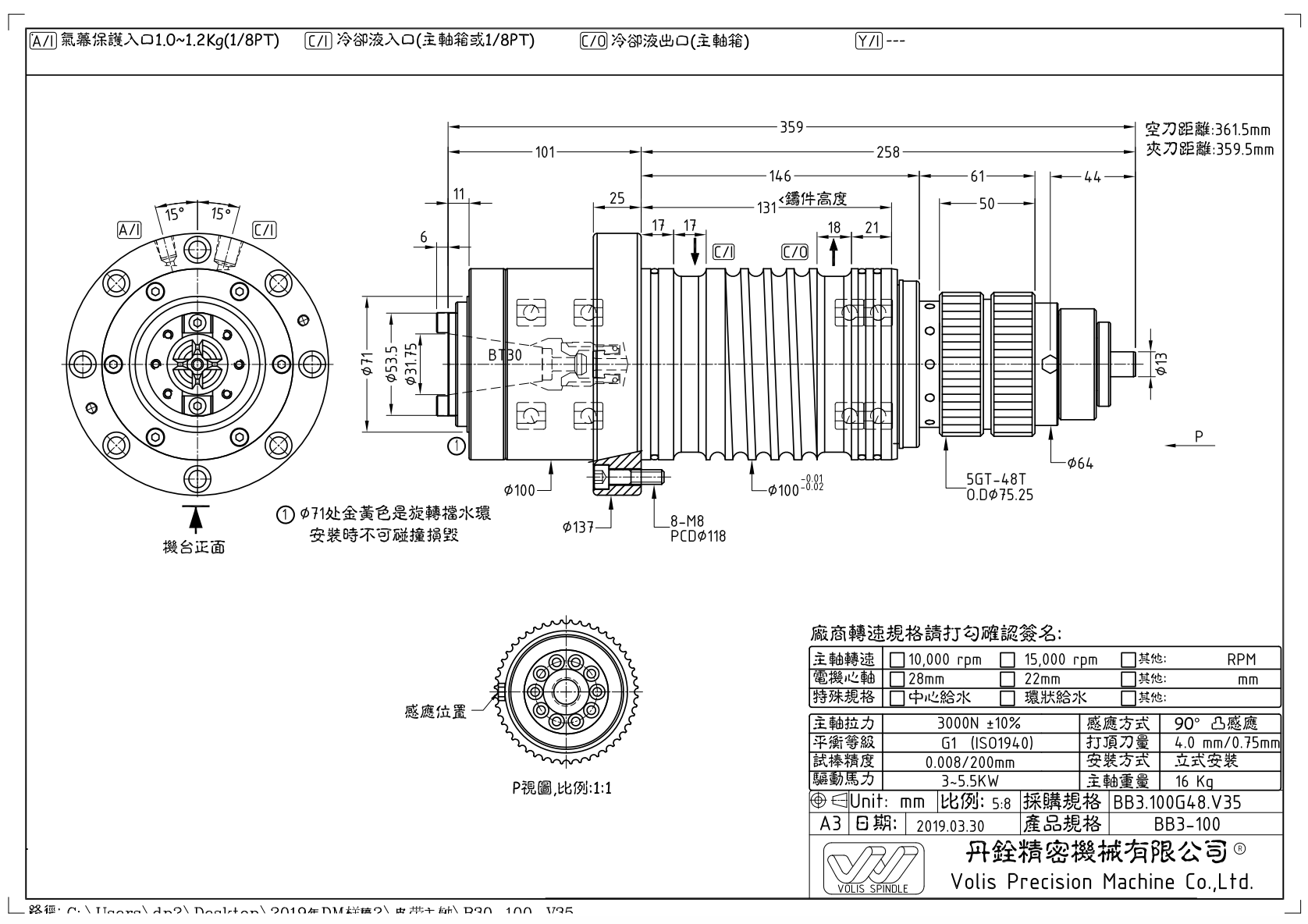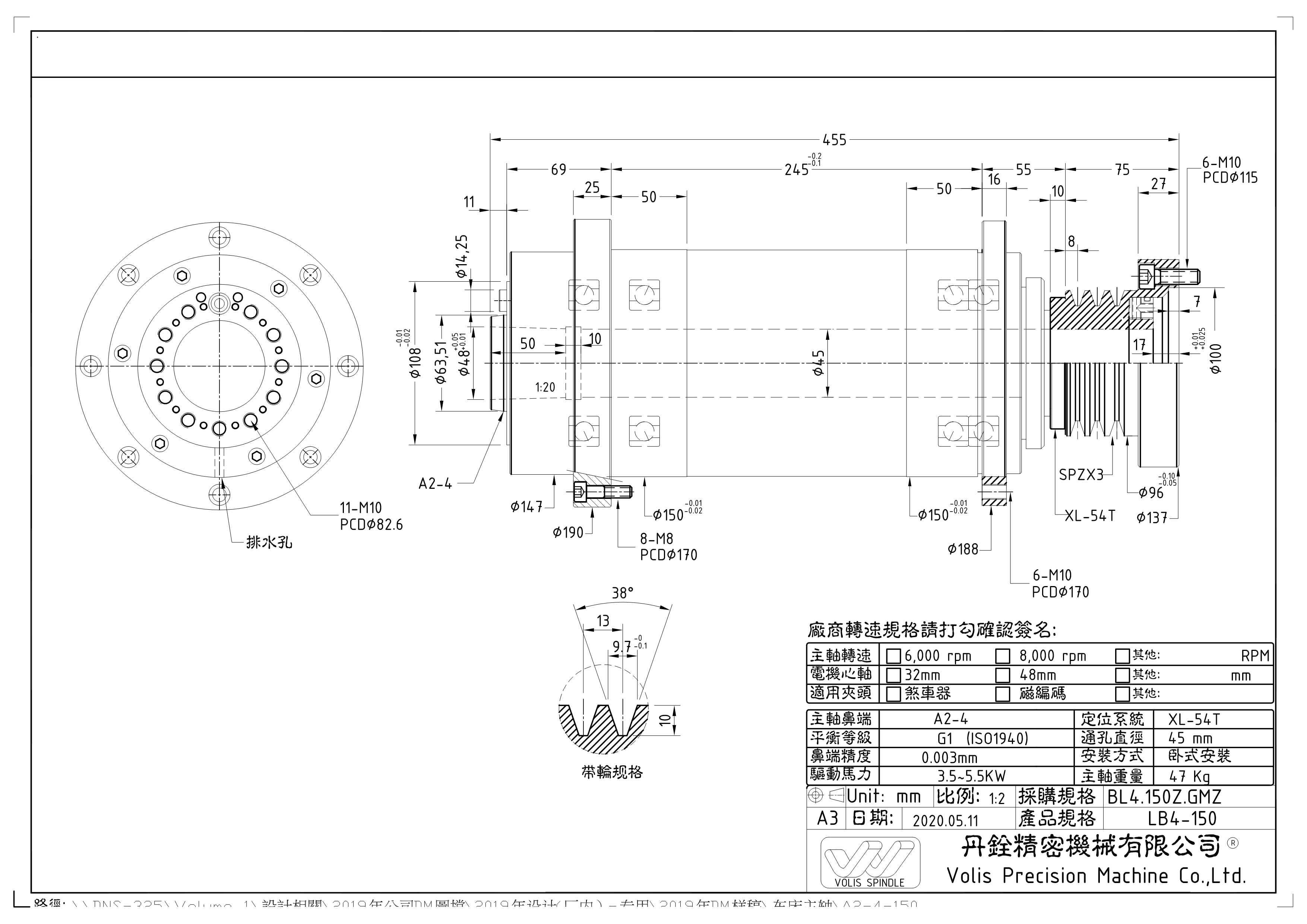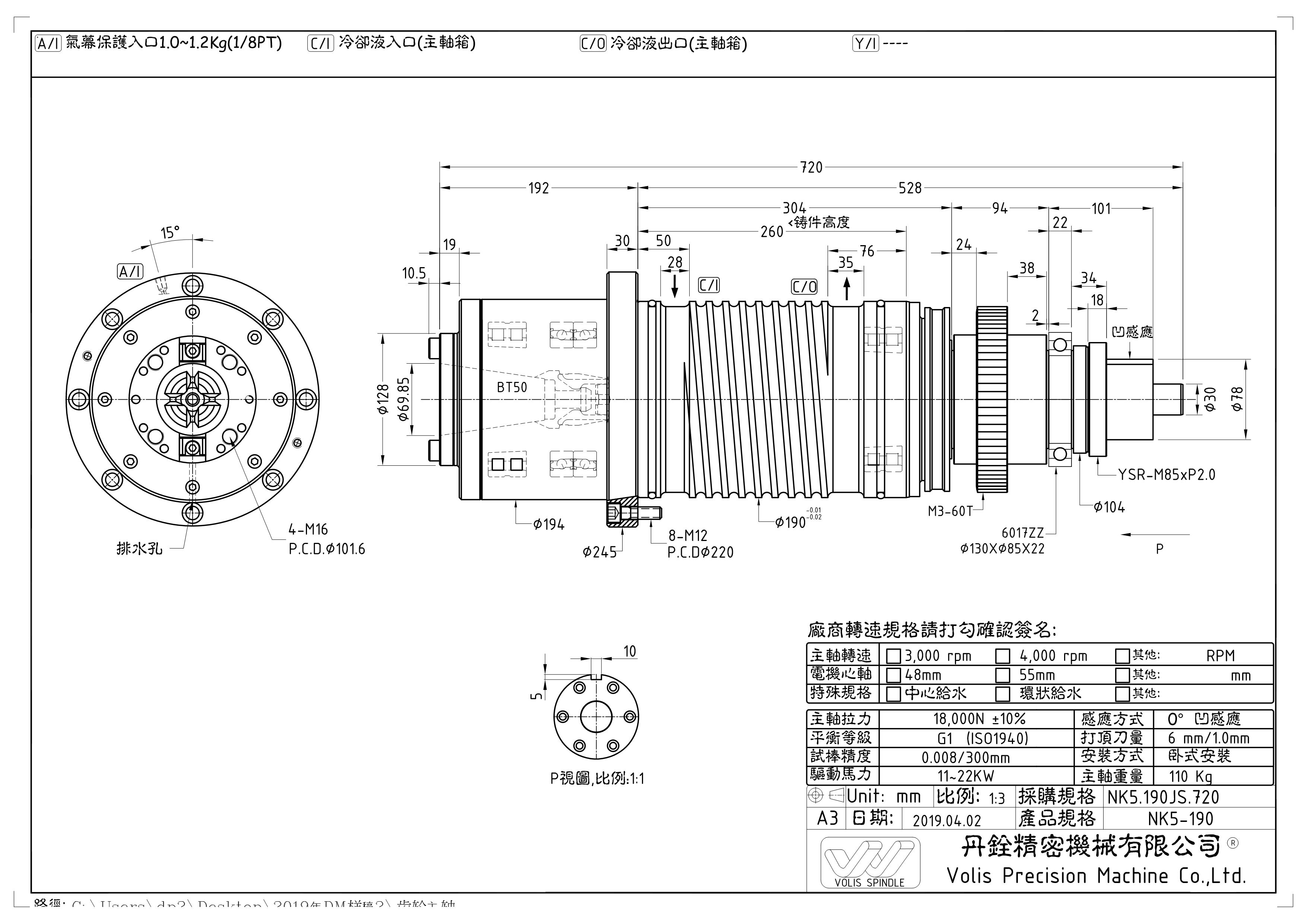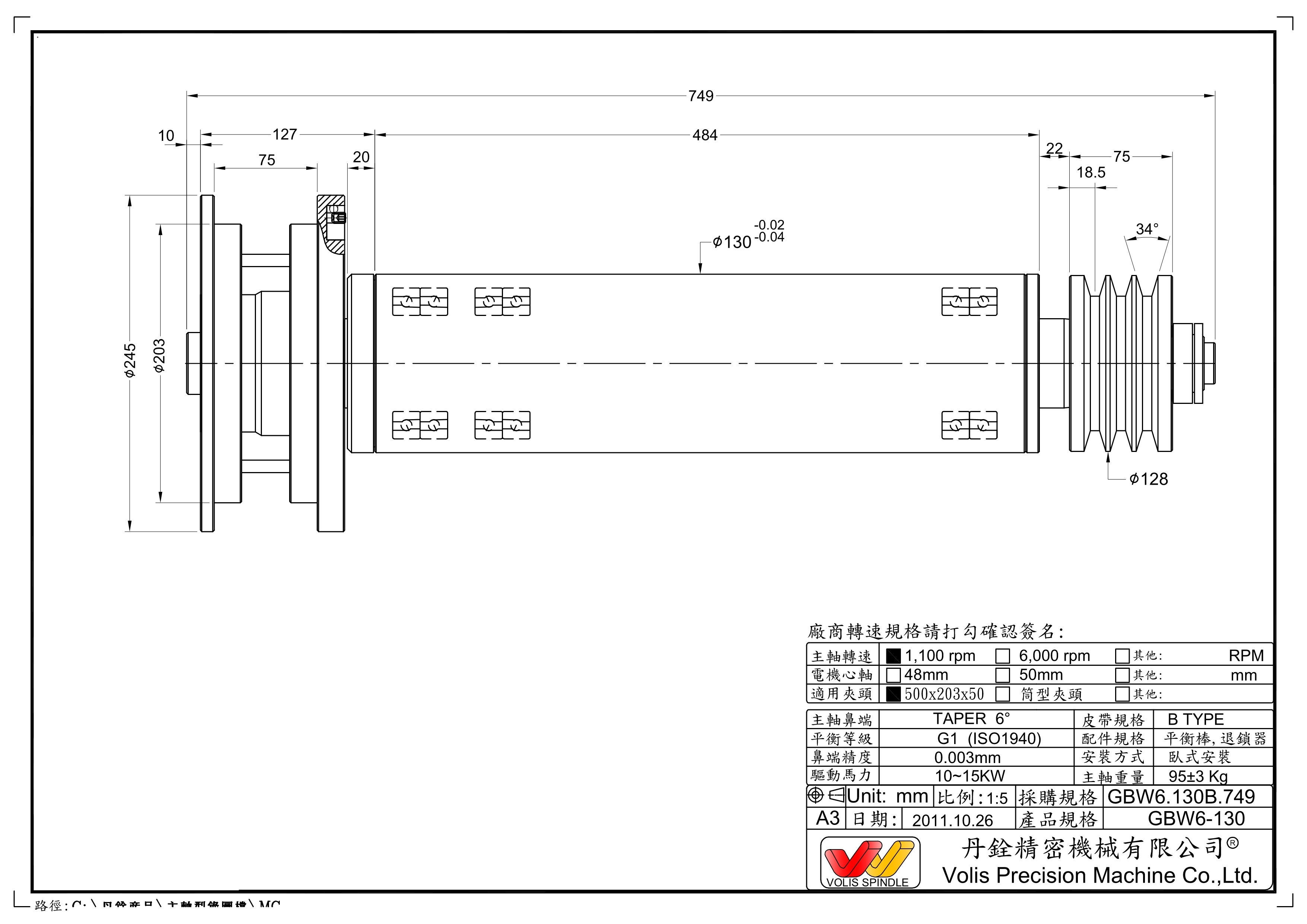The lathe spindle refers to the shaft on the lathe that drives the rotation of the workpiece or tool, usually composed of the spindle, bearings, and transmission components (gears or pulleys). In practical applications, there are two common types: non transmission electric spindle and mechanical transmission spindle. The zero transmission electric spindle adopts an integrated structure of motor and machine tool spindle, which has good rotational accuracy and stability. The torque and power output of the mechanical transmission spindle are much larger, but relatively speaking, the rotational accuracy and stability are slightly worse. Therefore, the correct design of machine tool spindles and their components is crucial for the impact on machine tool machining accuracy.
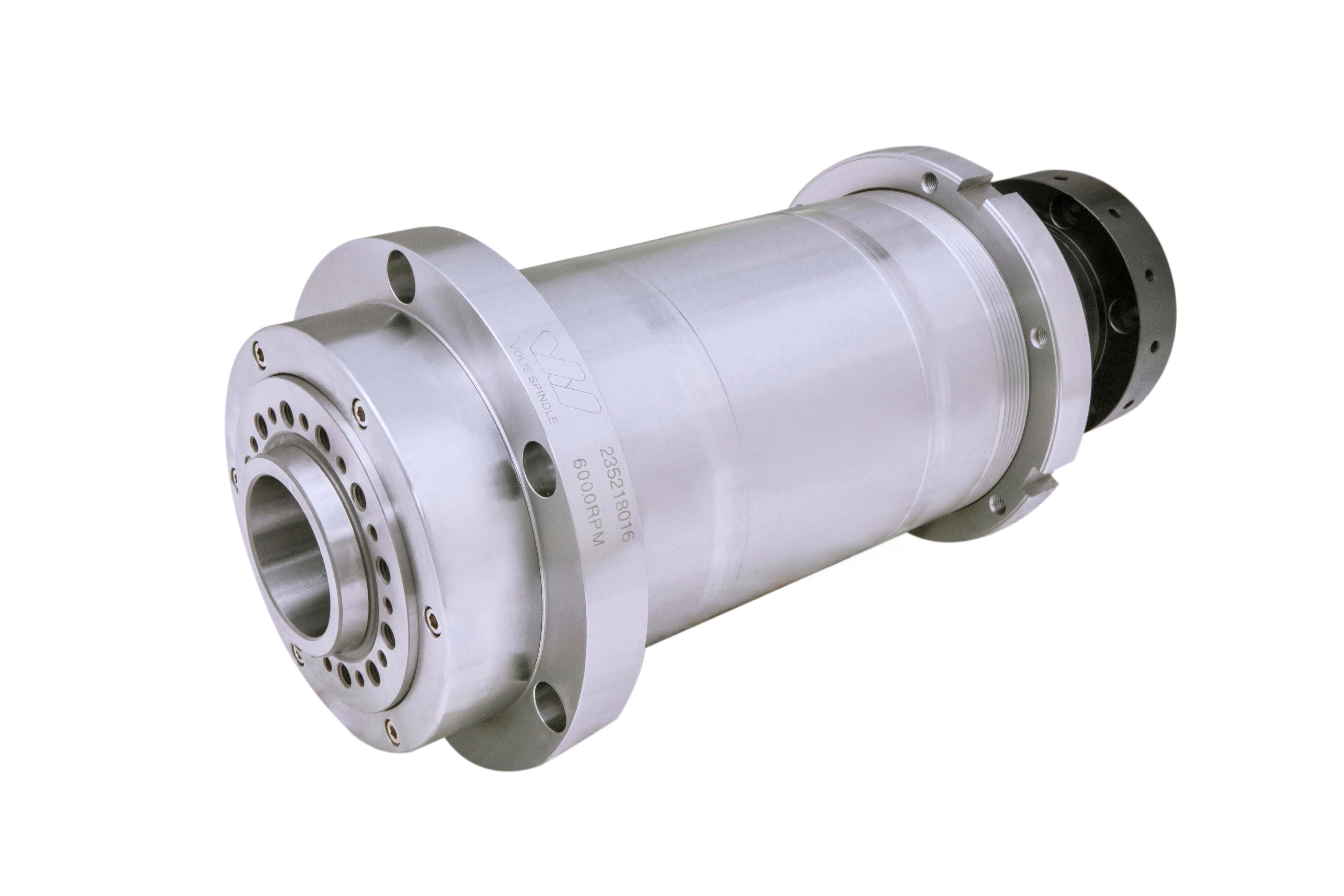
Lathe has been widely used in mechanical processing, and the lathe spindle is one of the extremely important components of the lathe. The performance of the lathe spindle directly affects the machining effect of the lathe. In order to ensure good stability, hardness, strength, and toughness of the lathe spindle, it is necessary to carry out appropriate machining and heat treatment on the lathe spindle to ensure good performance. Lathe is mainly used for machining shafts, discs, sleeves, and other workpieces with rotating surfaces. It is a widely used type of machine tool in mechanical manufacturing and repair factories, and is widely used in mechanical processing, playing an indispensable role. The lathe spindle is one of the very important structural components of the lathe, mainly used to support transmission parts and transmission torque.

 current location:
current location:
